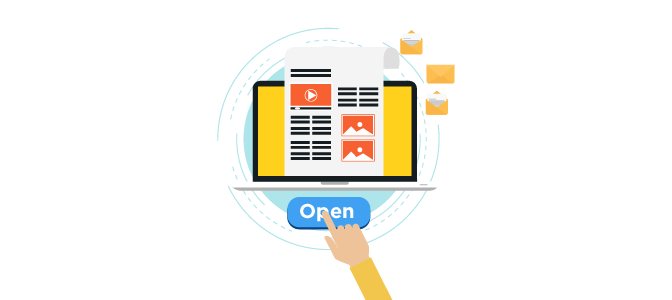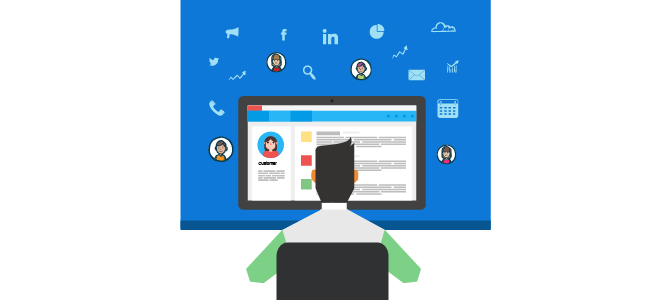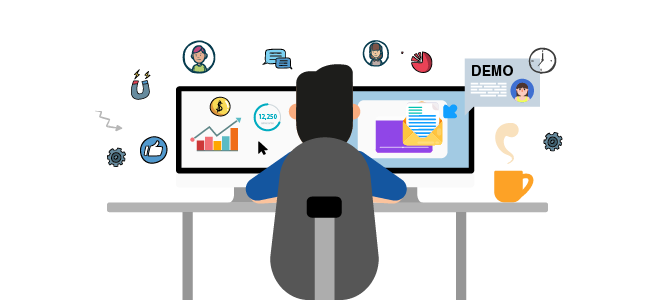Using behavioral triggers to run a successful marketing campaign
Behavioral triggers are incredibly helpful and effective at delivering the right message to the right person at the right time. With marketing automation software, you can set up workflows that execute a variety of actions when certain behaviors take place. The behavior triggers the action automatically, streamlining your marketing campaign.
Automating your marketing campaign with behavioral triggers ensures that the system executes every part of the campaign at just the right time. And you determine when that time is, and which behavior triggers it. Behavioral triggers are considered the low hanging fruit of marketing automation because they are so easy to use and produce such great results.
Below, we’ll dig into behavioral triggers and how to use them to run a successful marketing campaign. We’ll start with the basics.
What is a behavioral trigger?

When you use a marketing automation solution, you can set up workflows that execute various actions when someone displays a specific behavior. For example, if someone clicks on your website to see a free demo, you can have a behavioral trigger in place to automatically send them an email with a demo video.
Here’s another example: say someone buys a product from your eCommerce store. You can have a trigger in place to automatically send them a purchase confirmation email and receipt the second they complete their purchase. It’s all automated and takes place while you focus on more important tasks.
What is a marketing campaign?
A marketing campaign is a series of pre-planned outreach touchpoints, designed to accomplish a specified goal. Normally, marketing campaigns are designed to convince prospects to buy your product or service. Although they can also be used to provide existing customers with resources that increase customer satisfaction, along with a variety of other goals.
With marketing automation, you can set up a complete marketing campaign, turn it on, and it runs on its own with minimal human participation. Learn more about marketing campaigns.
How to use behavioral triggers in a marketing campaign

To explain how to use behavioral triggers in a marketing campaign, we’ll walk through a hypothetical campaign to explain how it works. In this case, we’ll use a lead nurturing campaign as an example.
The objective of a lead nurturing campaign is to move existing leads through the sales pipeline towards conversion. You do so by planning a series of touchpoints that tell a story over time about your brand and product. This story is meant to build confidence and trust in leads and continually increase their interest in your product and brand until they are sales-ready.
This is how a hypothetical lead nurturing campaign using behavioral triggers would work:
Plan out your touchpoints
The first step is to plan your outreach in a logical sequence that tells a story over time. You can incorporate various marketing tactics into your campaign. These could include emails, SMS text messaging, and more.
Plan them all out in advance, and you will have a better understanding of which behavioral triggers need to be activated when and based on which behavior.
Here is an example of the touchpoints of a simple lead nurturing campaign, listed in order
1. An email providing helpful, educational content about your industry, such as an eBook, that doesn’t try to sell your product (this will build trust and leads will start to see you as an authority in your space).
2. Another email with more educational content, such as a blog article (this will help solidify that trust and the lead’s perception of you as an authority).
Note: It’s advantageous to prepare additional emails that offer educational content. You can send these to leads who don’t engage with the first few emails. Once they start to engage, you can use a trigger to move them on to the next email on the list.
3. An email that contains a case study that illustrates how another business benefited from using your product (this will help leads imagine themselves in that situation, benefiting from your product).
Note: Prepare two of these emails. You may not need them, but in case you do, you’ll want to have it ready to go (more on that below).
4. An email with a link to a short demo video so leads can see your product in action.
5. An email offering a one-time discount for new customers.
6. An email with an invitation to meet and discuss the lead’s needs and how your product might help them.
Pro tip: Each touchpoint should include a call-to-action (CTA) so that your lead has a chance to engage with your company and move closer to conversion.
Determine which behaviors trigger which system actions

Lead scoring
Lead scoring is an important behavioral trigger. Each time a lead takes a specified action, such as opening your email or clicking to download content, the system awards them points. This helps you know when a lead is engaged enough to be considered sale-ready and can be passed over to sales for personal outreach.
You simply set up a behavioral trigger in your marketing campaign workflow, and the system automatically scores the lead for each of those specified actions.
Changes to touchpoint sequencing
Let’s say you plan to send each of those emails a week apart. However, when you send the demo video email, someone clicks on it. That tells you that they are already sales-ready. So, you use a behavioral trigger to pull them out of the campaign and another one to send an alert to sales, so they can reach out immediately.
Here is another example of when to trigger a change in sequencing. If someone marks your email as spam, your system will know. If that happens, you can consider them a dead-end lead with no chance of buying your product. Use a behavioral trigger to pull them out of the campaign.
Managing a lack of engagement
Ideally, your leads will click your CTA in each email and read the content you send. If they do, then they stay on course and follow your original touchpoint plan.
But what if they don’t? If you send your first two emails with educational, non-salesy content and leads ignore them, you’ll want to continue to send them the rest of the educational emails you had pre-prepared. Hopefully, eventually, they will engage and move on to the next email.
You can use a behavioral trigger to automate this. If they click to download the content in the first email, the system knows to send them the next email on the list with the next planned email send. If they don’t click to download, the system knows and will continue to send those educational emails each week until they click one. When they do, the system will move them on to the next email on the list.
Taking advantage of engagement
If someone clicks on your email that provides educational content such as a blog article or eBook, it indicates that they are interested and actively engaging with your content. That presents an opportunity to continue the engagement.
If they click through to your blog, your system will know and track that. When that happens, you can have a behavioral trigger in place to send them an email the next day to tell them you noticed they were browsing your blog. Use that email to encourage them to subscribe to your blog so they can receive new articles as soon as they are published—and include a link to subscribe as the CTA.
If they click on an eBook you send, use a behavioral trigger to automatically send them another email the next day. Tell them you noticed they downloaded your eBook and you hope they found it helpful. Then provide another eBook on a related topic and tell them you hope this content helps them further.
Alert sales when a lead becomes marketing qualified
When you score leads, you set up a scoring threshold that a lead must cross to be considered marketing qualified (i.e., sales-ready). Once leads display enough interest—represented by them crossing your lead scoring, marketing qualified threshold—you need to pass them over to sales. Sales needs to reach out as soon as possible. Otherwise, you might lose them to a competitor.
Use behavioral triggers so that the system knows when someone reaches that designated score. When the system realizes the lead is qualified, it sends an alert to sales notifying them to reach out and start a conversation.
Scheduling a live demo
If someone clicks on your email to view your demo video, that is a strong indication of their propensity to buy. A recorded demo is a quick intro, but a live demo allows leads to ask questions and see more of your product.
Set up a trigger that automatically sends an email to that lead the next day offering them the chance to schedule a live demo. Tell them you noticed their interest and would love to show them the product live. You can even include an online appointment scheduling link in the email so they can schedule the demo right then and there.
Conclusion
That is just a simple example of a marketing campaign that uses behavioral triggers to automate processes and move leads through the funnel faster.
In reality, you can use your marketing automation solution’s workflow builder to set up behavioral triggers for virtually any behavior you want. If you run a multichannel marketing campaign, you can incorporate the sending of SMS text messages and more with triggers.
The bottom line is that a marketing campaign that uses behavioral triggers is much more effective than a static campaign. Trigger-based campaigns deliver the right content and message to the right person at the right time.
Follow the tips above and get creative with your triggers, and you’ll be converting more leads in no time.
Do you use a specific behavioral trigger that produces great results for your marketing campaigns? Share it with us in the comments section below!
2 Comments
spitz auto parts used tires
about 6 years agoWonderful, what a web site it is! This blog gives helpful data to us, keep it up.
ReplyGabriel Swain
about 6 years agoThank you so much for your super encouraging comment. We're so glad our blog articles are helping you and providing you with new ideas. Please keep reading and commenting--we love to hear your feedback!
Reply